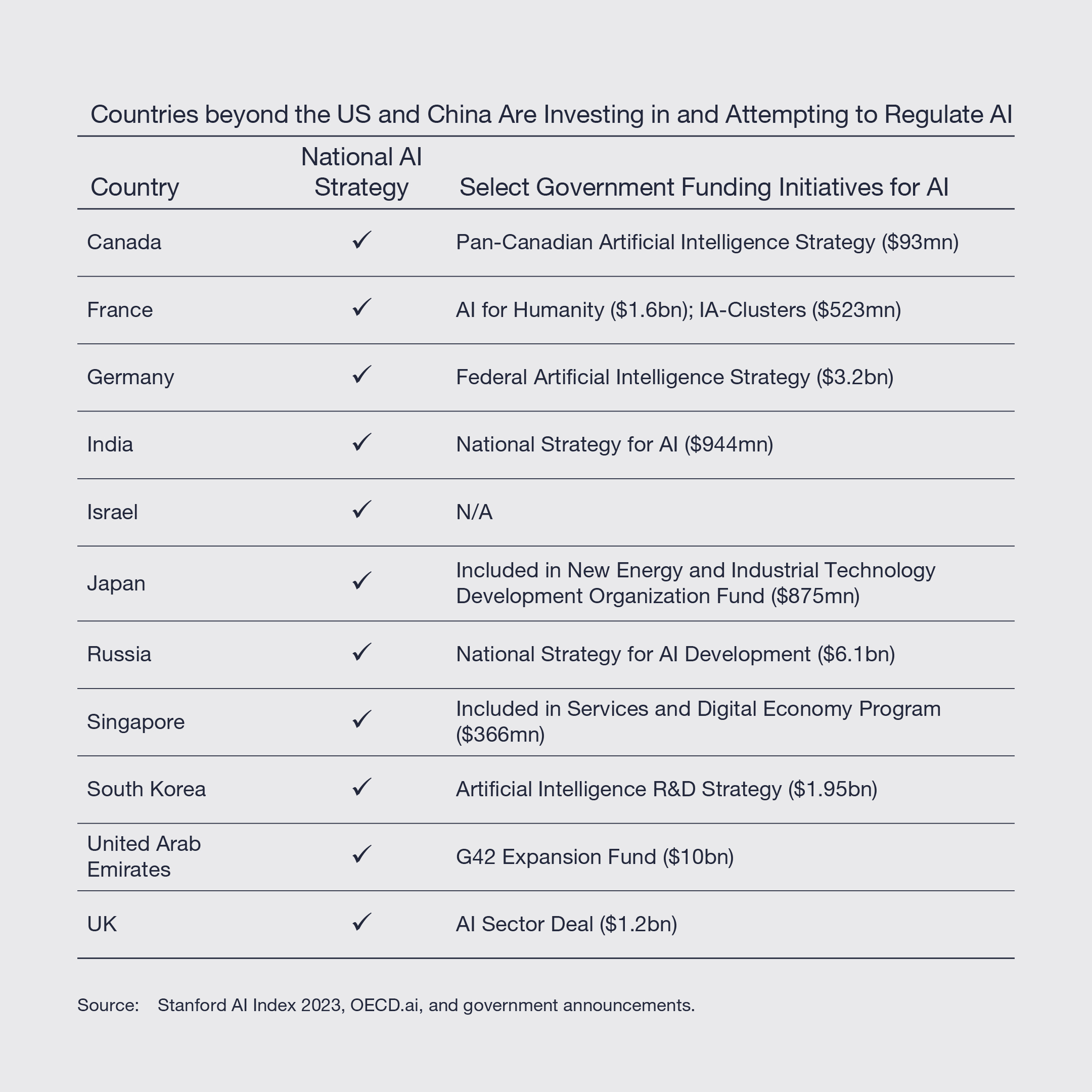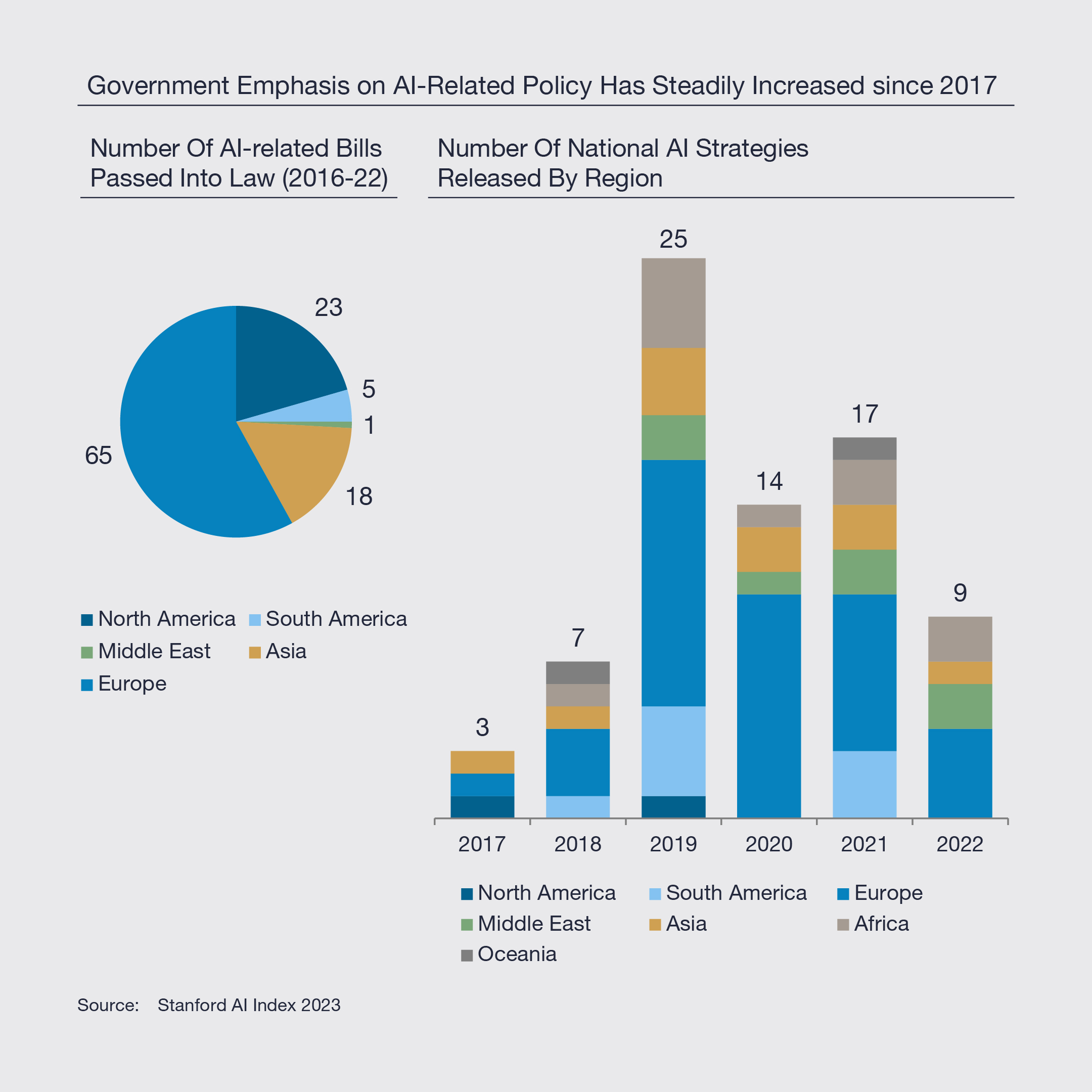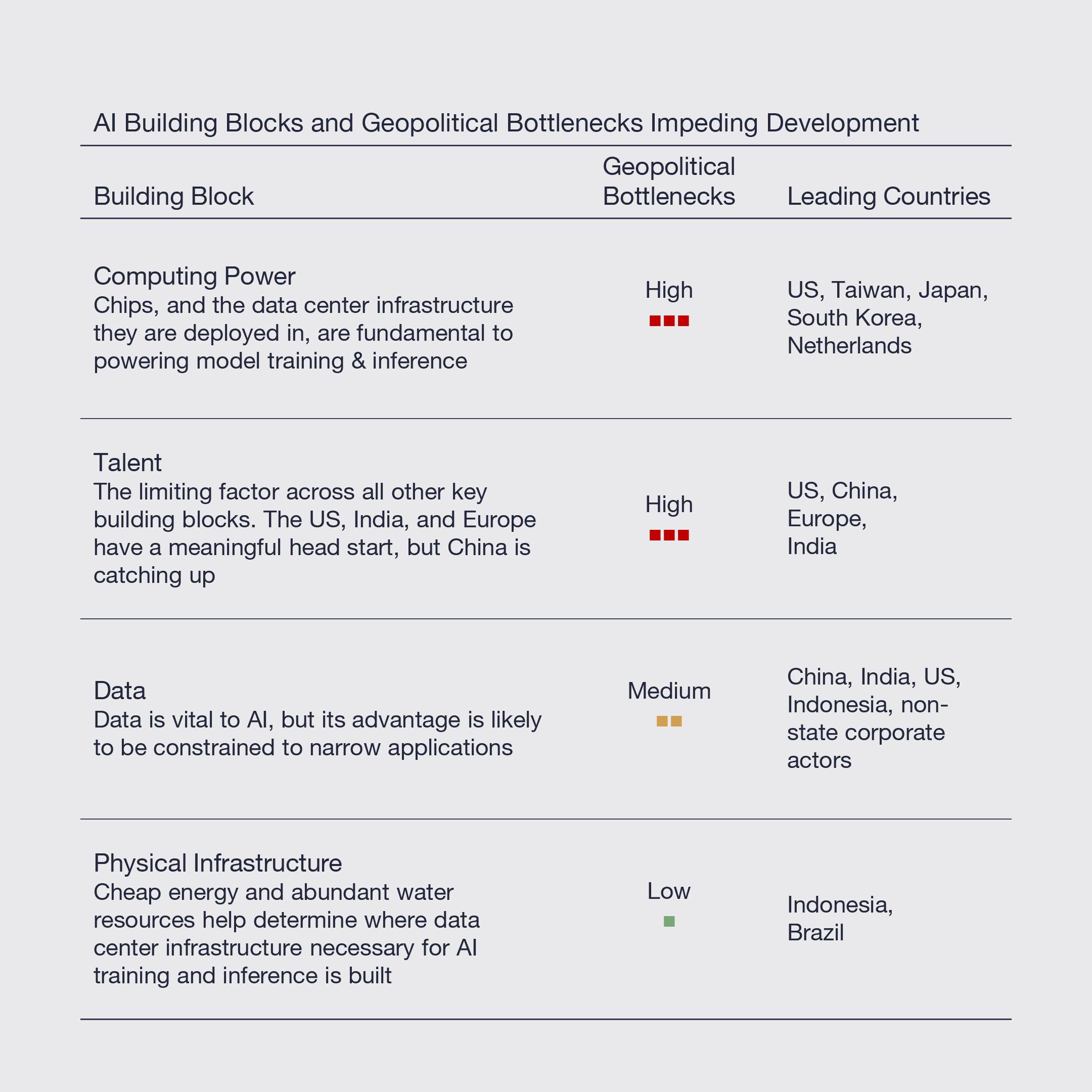This research brief provides an overview of the geopolitical dynamics impacting countries’ varying approaches to AI, national policy responses and how they interact with bottlenecks in the AI value chain, as well as forthcoming implications for businesses in the technology, healthcare, financial services, and energy sectors.
Executive Summary
Leadership in AI — and emerging technologies more generally — has become the frontier of U.S.-China geostrategic competition. AI is critical, not only to the defense of countries (through next-generation autonomous weapons), but also to their political functions, as AI changes how the creation and distribution of information is understood.
AI-generated content and “deep fakes” significantly lower the cost of influence operations by both domestic and foreign actors and will influence – and even disrupt – democratic processes. Above all, the vast economic gains made possible by AI are driving the centrality of AI competition in the global policy agenda.
However, AI is not just a two-way race between the United States and China. The United Kingdom, Canada, France, Singapore, India, South Korea, and Israel, among others, have become prominent AI players. Strong AI capabilities pose an opportunity for so-called “middle powers” (Canada, the U.K., France, Israel) to remain economically competitive and geopolitically influential in an international order increasingly shaped by rivalry between the U.S. and China.

Governments around the world are grappling with the tension between the imperative to develop strong AI capabilities and the need for guardrails that minimize possible harms. Yet, geostrategic competition complicates attempts to respond to this conundrum as countries view slowing down their own AI deployment as a “zero-sum” loss, absent guarantees that others will follow this same approach. As a result, most regulatory responses are occurring primarily at the national and local level.

To date, government policy focused on AI and associated parts of the supply chain can be broadly divided into three categories:
- "Promote” Policies: Such as allocating R&D funding, enacting a flexible immigration policy, and providing manufacturing or other subsidies
- "Protect” Policies: Such as the imposition of export controls on key inputs, and bans on outbound investment in specific AI applications
- "Principles” Policies: Such as domestically focused safety and ethics guidelines to steer AI development
National-level policies and their impact on the global scramble for AI depend in part on the distribution of structural advantages necessary to power AI development. Computing power, talent, data, and physical infrastructure are widely recognized as the key building blocks for AI development and adoption. So far, the US has most prominently deployed its strength in computing power. Yet, the other three factors will also increasingly be weaponized in the AI race.

As the U.S. and China solidify their leads in AI and tighten control over the inputs necessary for its development, companies will find themselves torn between diverging regulatory and commercial approaches for AI. Globalized business models will be under fire as governments increasingly assert the importance of geopolitical and ideological alignment in the sale of AI services.
Companies operating in this area, either as fundamental enabling cogs in the AI supply chain or as industries set to be significantly disrupted by the rise of AI, will face several critical strategic considerations:
- Restrictions on Global Customer Bases
- Policies such as export controls, tariffs, sanctions, and subsidies will be deployed by the U.S. or China against strategically important firms, including restrictions on which companies and countries with whom one can do business. Companies should consider how their global customer bases could be restricted according to geopolitical alignment and begin mitigating any existing dependency on government contracts in markets that might jeopardize revenue elsewhere.
- Intensifying Corporate Espionage
- Strategically important companies in the AI value chain will likely face intensified corporate espionage. Companies in this position should consider what mitigation methods are available across a number of attack vectors, including talent poaching, cyber espionage, and explicit knowledge transfers required by regulation.
- Opportunities in Third-country Markets
- As U.S. and Chinese companies are increasingly restricted from buying and selling to one another, third countries that are either well positioned to support AI development or primed for AI adoption could provide opportunities for expansion. It is worth looking beyond the U.S. and China to assess which other countries will have advantages across each of the AI bottlenecks.
Conclusion
With these elements in mind, the report provides a series of policies and considerations for businesses – with deeper dives on the technology, healthcare, financial services, and energy sectors – to minimize geopolitical risk, and identifies potential opportunities in the evolving global AI ecosystem.



